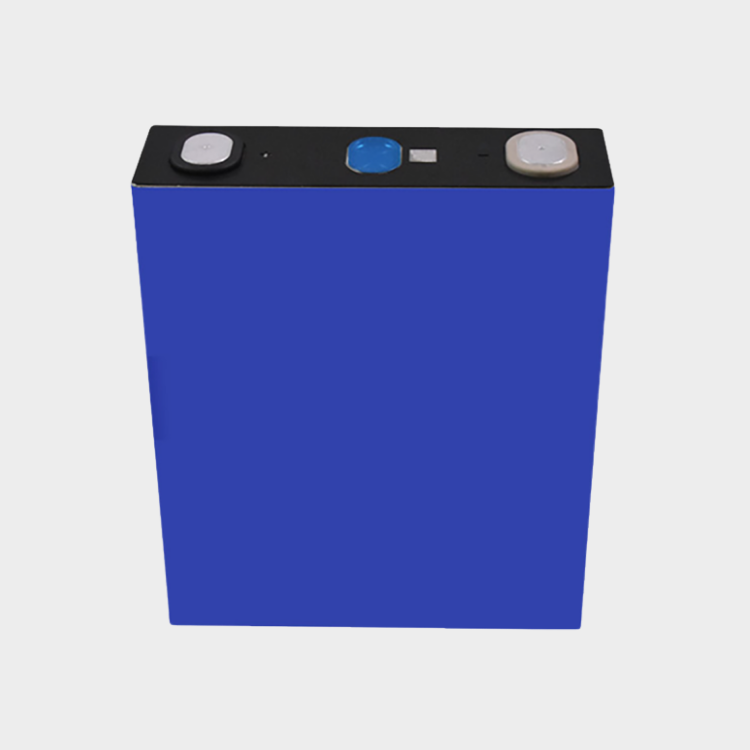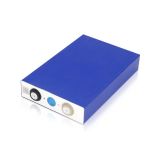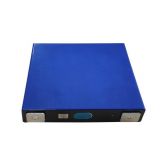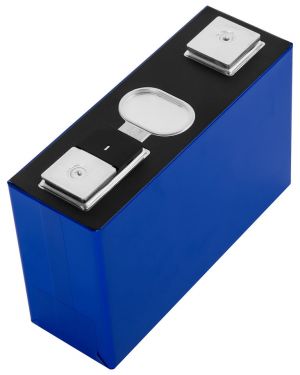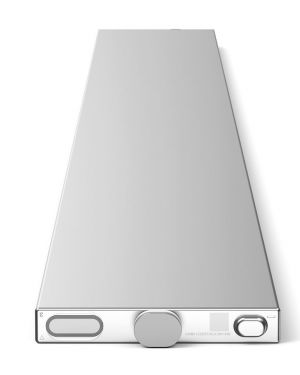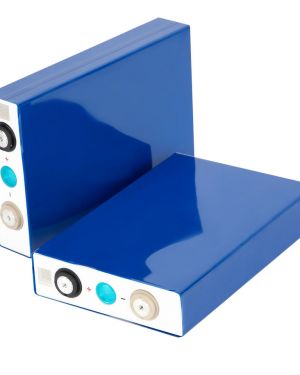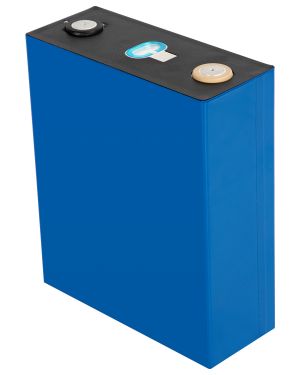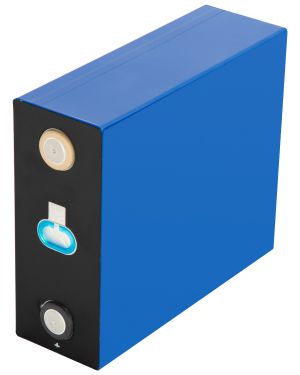| Nominal Capacity: | 230Ah | Nominal Voltage: | 3.2v |
|---|---|---|---|
| Internal Impedence: | ≤0.5mΩ | Operating Votage: | 2.0-3.65V |
| Dimension: | 207.20*173.9*53.85 | Battery Weight: | 4140±124g |
EVE 3.2V 230Ah LiFePO4 Prismatic Battery Cell

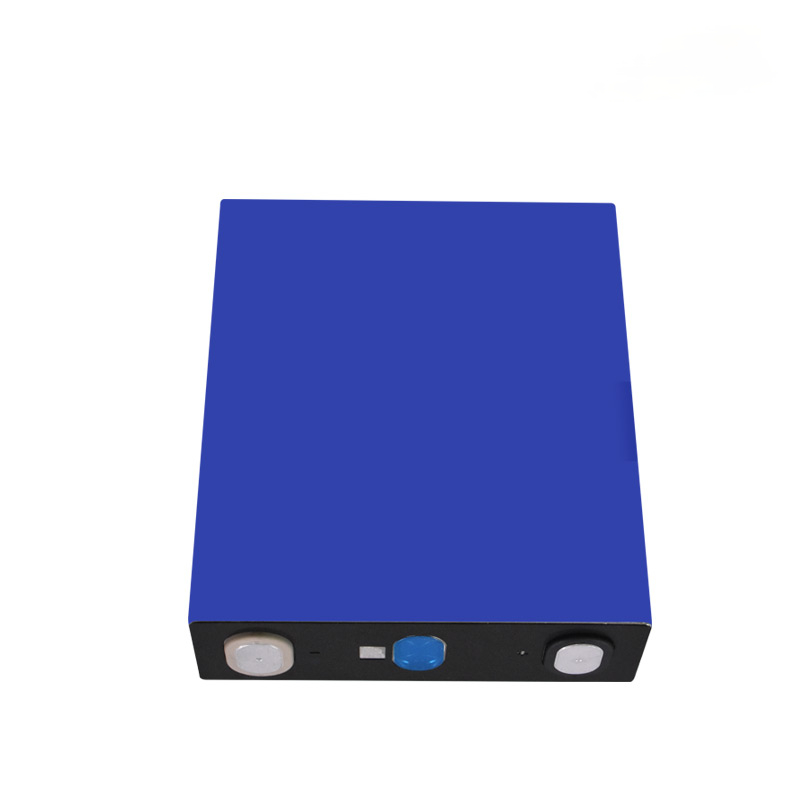
Features:
1. Widely used in Energy Storage System, EV, UPS and so on.
2. Excellent performance,
3. High stability
4. Long life time.
No | Item | Parameter Specification |
1 | Min Capacity | 230Ah |
2 | Min Energy | 736Wh |
3 | Nominal Voltage | 3.2V |
4 | Internal Resistance | ≤0.5mΩ |
5 | Charging Cut-off Voltage | 3.65V |
6 | Discharging Cut-off Voltage | 2.5V (T>0℃) 2.0V (T≤0℃) |
7 | Standard Charging Current | 115A(0.5C) |
8 | Standard Discharging Current | 230A(1C) |
9 | Charging Temperature | 0~65℃ |
10 | Discharging Temperature | -35~65℃ |
11 | Storage Temperature | 3 months:0~45℃ 1 month:-20~45℃ |
12 | Cycling Performance | 4000 Cycles |
13 | Weight | 4140±124g |
14 | Dimension | Terminal Height:207.20±0.50mm |
15 | Can-top Height:204.60±0.50mm | |
16 | Length:173.90±0.50mm | |
17 | Thickness:53.85±0.40mm |
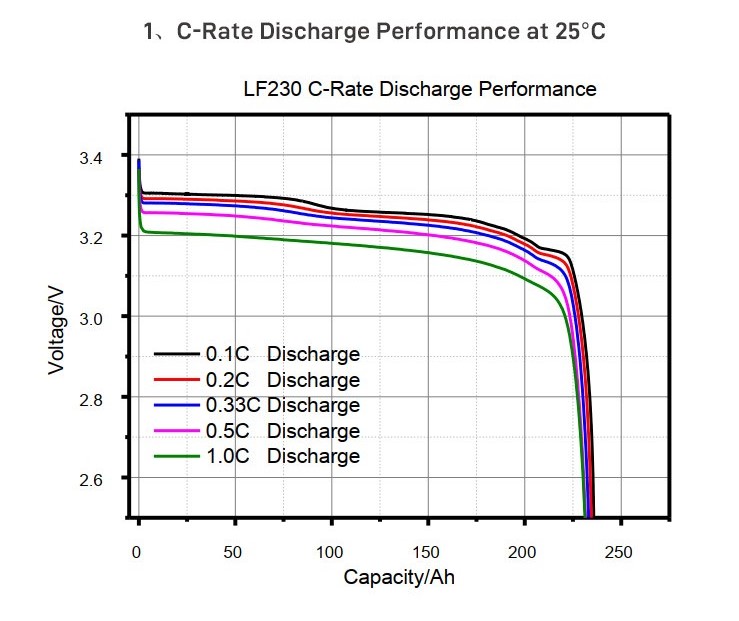
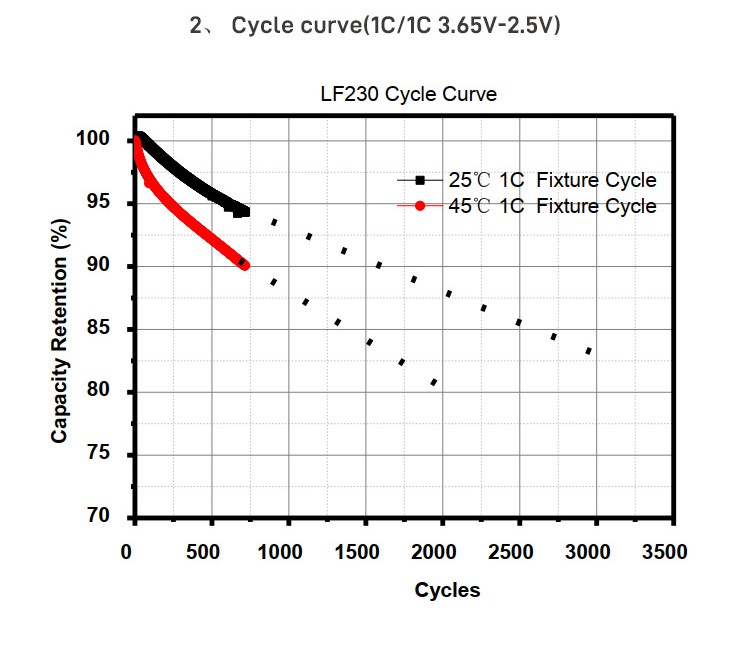
(1)Testing Clamp Preparation:
The single cell needs to be clamped with steel splints or aluminum alloy splints (thickness: 8 mm). The splints need to cover the large surface of the cell. The splints are fixed with 6 M6 bolts. All sides of the splints need to be covered with insulating film. Fixtures As shown below:
(2)Standard Charge:
Standard charging is to charge the battery with a constant current of 115.0A to 3.65V under the condition of an ambient temperature of 25℃±2℃, and then transfer to constant voltage charging at 3.65V until the charging current is less than or equal to 11.5A, and rest for 30min
(3)Standard Discharge:
Standard discharge is to discharge the battery at a constant current of 230.0A at an ambient temperature of 25°C± 2°C, discharge until the voltage reaches 2.5V, and rest for 30 minutes.
(4)Capacity and Energy Calibration:
The capacity calibration is to charge the cell at a constant current of 173.0A to 3.65V under the condition of an ambient temperature of 25℃±2℃, and then transfer to constant voltage charging at 3.65V until the charging current is less than or equal to 8.65A, rest for 30 minutes, and then discharge according to the 3.6 standard discharge. Repeat the standard charging mode and standard discharging mode 5 times, the average discharge capacity of the last 3 times is the 1C discharge capacity, the recorded discharge capacity is the calibrated capacity C0, and the average discharge energy of the last 3 times is the 1C discharge energy. Record the discharge energy as the calibration energy E0.
